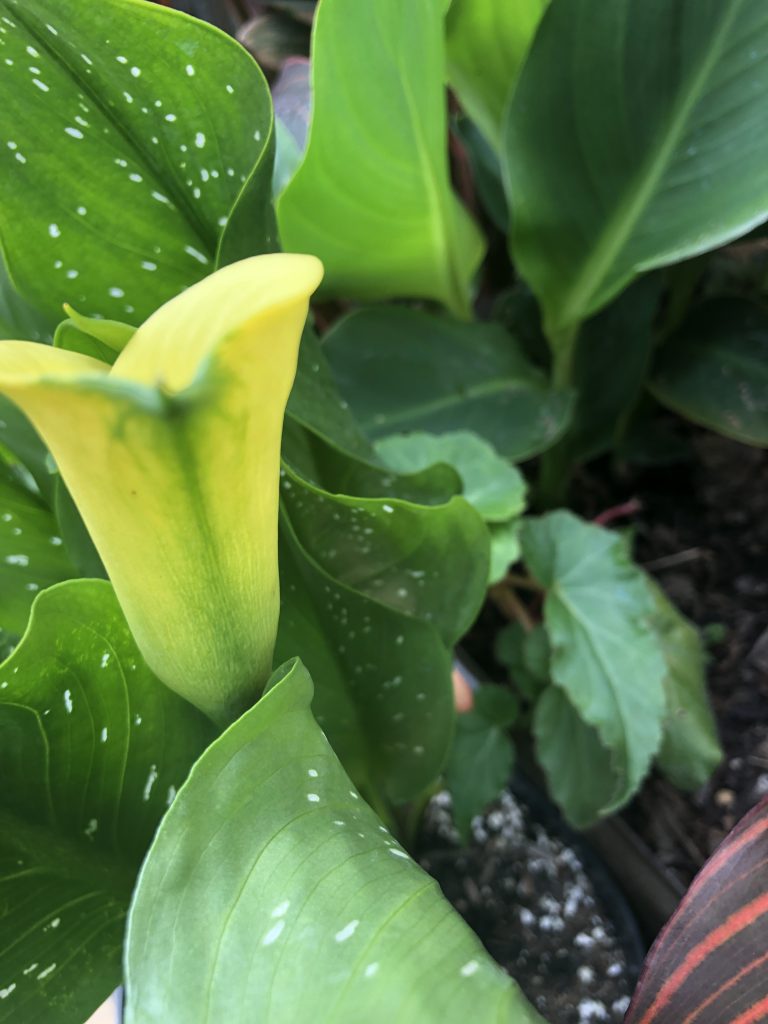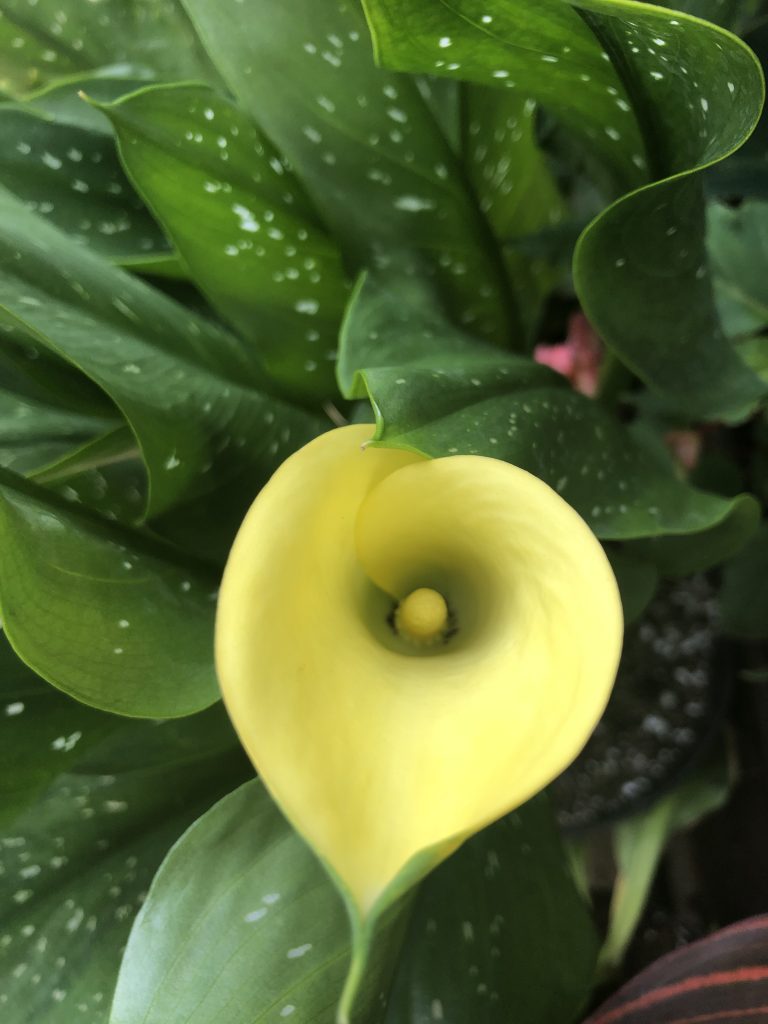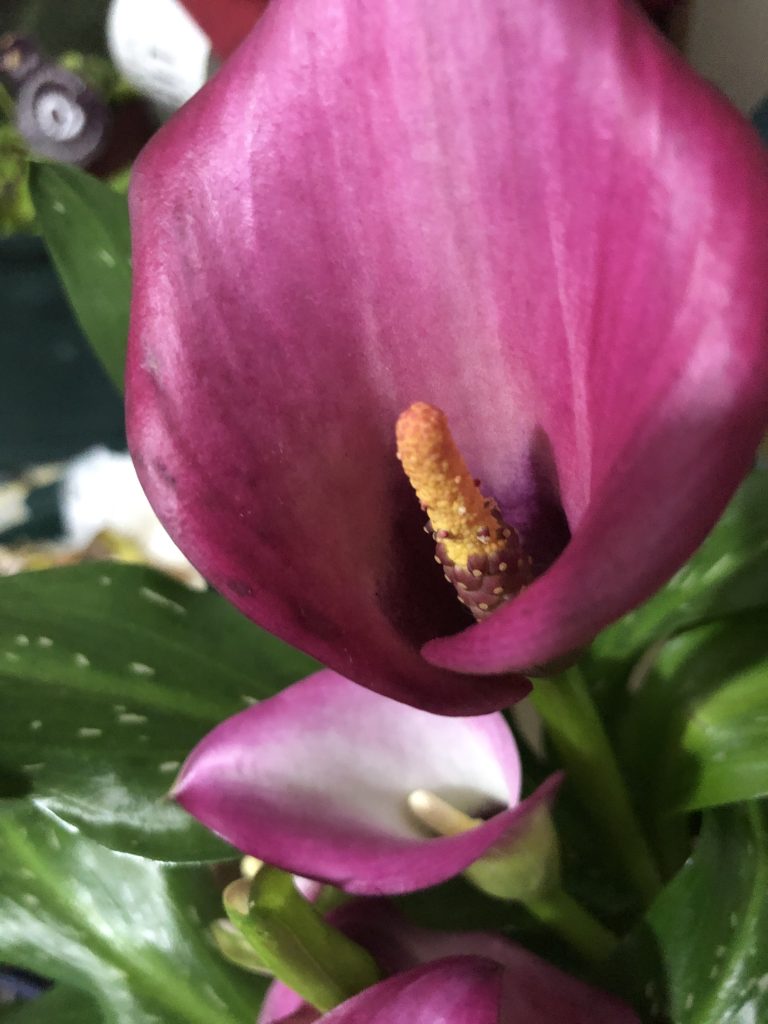Caring for calla lilies in the UK involves understanding the local climate and adjusting practices accordingly. Here’s a tailored guide for UK gardeners:
Planting
- Location: In the UK, plant calla lilies in a location that receives full sun to partial shade. In northern regions, they will benefit from full sun, while in southern regions, some afternoon shade is preferable.
- Soil: Ensure the soil is well-draining and rich in organic matter. A slightly acidic to neutral pH (6.0-6.5) is ideal.
- Timing: Plant calla lilies in late spring after the last frost, typically around late April to May.
Watering
- Frequency: Keep the soil consistently moist but not waterlogged. The UK’s generally moderate rainfall can help, but be prepared to water during dry spells.
- Method: Water at the base to avoid wetting the foliage, which can help prevent fungal diseases.
Feeding
- Type: Use a balanced, water-soluble fertilizer such as 10-10-10 or 20-20-20.
- Frequency: Feed every 4-6 weeks during the growing season, which runs from spring through early autumn.
Mulching
- Purpose: Mulch helps retain moisture, suppress weeds, and regulate soil temperature, especially beneficial in the variable UK climate.
- Material: Use organic mulches like straw, bark chips, or compost.
Pruning and Deadheading
- Deadheading: Remove spent flowers to encourage more blooms and prevent the plant from using energy on seed production.
- Pruning: Cut back the foliage to the ground after it has yellowed and died back in the autumn. This helps the plant conserve energy for the next growing season.



Overwintering
- In-Ground Plants: In milder parts of the UK (e.g., southern England), calla lilies can be left in the ground year-round. Apply a thick layer of mulch in late autumn for protection.
- In Cooler Regions: In colder parts of the UK, dig up the rhizomes after the first frost. Allow them to dry for a few days, then store them in a cool, dry place (e.g., in a paper bag with some peat moss) until spring.
Pests and Diseases
- Pests: Keep an eye out for aphids, spider mites, and slugs. Use insecticidal soap or neem oil for insects, and hand-pick slugs or use slug bait.
- Diseases: Calla lilies in the UK can suffer from fungal diseases like botrytis and root rot. Ensure proper spacing, avoid overhead watering, and remove any infected plant parts.
General Tips
- Division: Every few years, divide the rhizomes in early spring to prevent overcrowding and rejuvenate the plants.
- Monitoring: Regularly check for signs of stress or disease. Healthy calla lilies will have vibrant, glossy leaves and produce multiple blooms.
By following these guidelines tailored to the UK climate, you can enjoy healthy and vibrant calla lilies in your garden or as potted plants.


